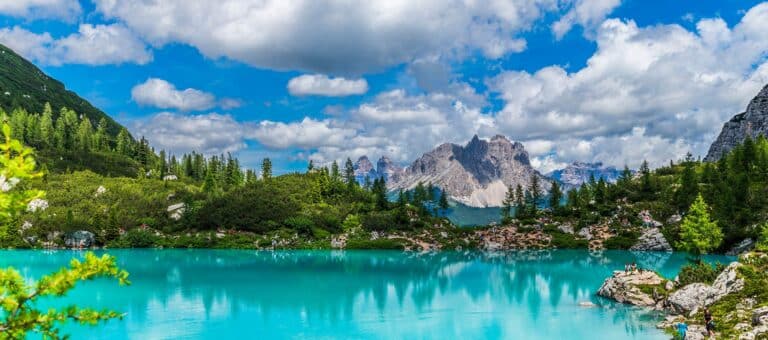With its ideal climate, access to the sea, and fabulous soil, it’s no wonder that people have lived in Italy since Prehistoric times. When you visit, put a UNESCO World Heritage Site on your itinerary. You’ll find whispers of a culture that existed before the dawn of time, and hints of exotic cultures at home in Italy today. Many such places are in the crossroads of ancient civilizations that met and merged from a diverse background, including Byzantium, Greece, Germany, and the Arab Peninsula.
Put some of these secret spots on your Italy list, and you’ll dive into the diverse sounds, tastes, and art that make it a dream vacation. Following are some ancient UNESCO Sites to consider.
Archaeological Area of Agrigento
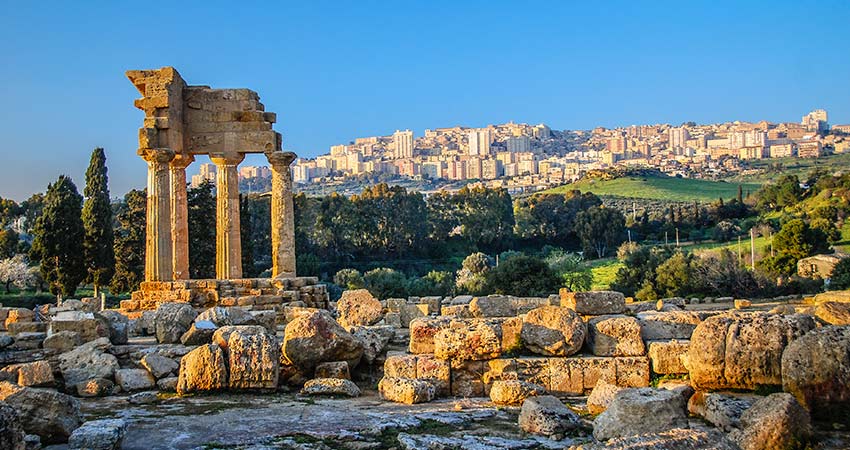
Agrigento was one of the greatest cities in the ancient Mediterranean area. Founded as a Greek colony in the 6th century BC, on what is now Sicily, its past glory is reflected in the remains of Doric temples. Much of Agrigento is still intact, under the hearty fields and orchards.
There are excavated areas where visitors can take a look at the Greek, Roman, and Early Christian eras, including the burial rituals. The archaeological zone known as ‘The Valley of the Temples’ covers a vast area, and the Doric temples are situated on a sacred hill. These temples, still in remarkable shape, are not only outstanding monuments of Greek art and culture, they are a reminder of that civilization’s tremendous influence.
Cilento and Vallo di Diano National Park with the Archeological Sites of Paestum and Velia, and the Certosa di Padula
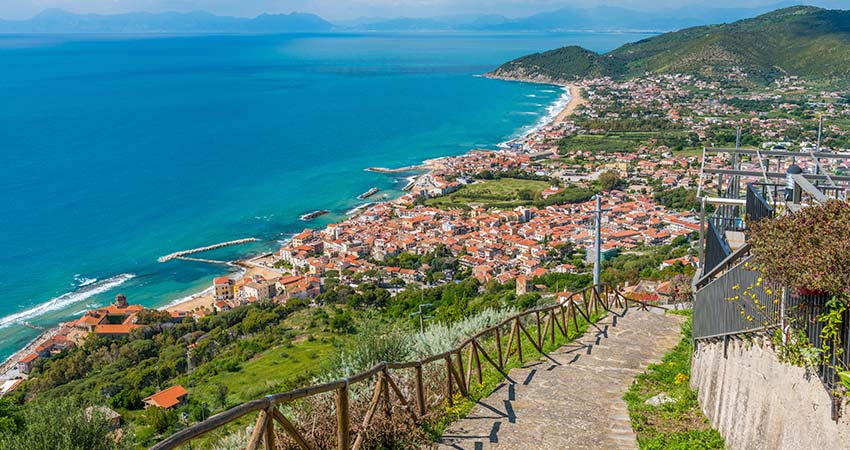
Lovely Cilento, just south of the Amalfi Coast, has terrific beaches, lovely villages, and is home to the Mediterranean Diet. This sweet paradise has evidence of human occupation dating back 250,000 years. Neolithic farmers, Bronze Age gatherings, Iron Age, Etruscan, and Greek societies all enjoyed their lives and communicated with each other here. By the 3rd century BC Roman roads cut the earth, replacing human paths.
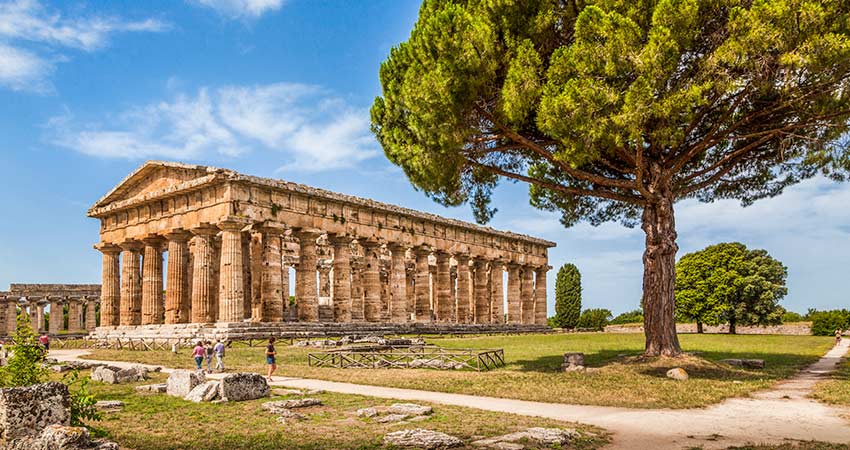
Those roads were rebuilt during the Middle Ages, while feudal castles and cathedrals sprang up. Extending across the mountains of Salerno, the National Park has two archaeological sites of Paestum and Veila, as well as the extraordinary Certosa di Padula, one of the most impressive monastic structures in the world. This exceptional park is defined by valleys, rivers, and the Tyrrhenian Sea.
Archaeological Areas of Pompei, Herculaneum, and Torre Annunziata
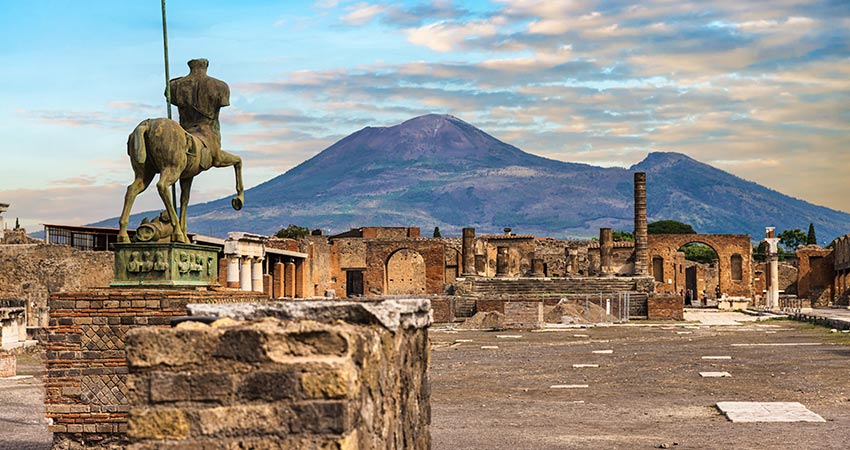
Mt. Vesuvius erupted on August 24, in 79 AD, and its ashes created a fairly complete picture of Roman life from the 1st century BC through the 1st century AD. The ruins of these three cities are unparalleled. Torre Annunziata is the best example of a suburban, upscale villa during this time, and beautiful murals adorn its walls.
Pompei, in contrast, was a commercial town. Go there, and you’ll still see chariot tracks in the streets, people caught in the acts of everyday life, and green marble bars and bordellos with mosaics. The Villa of the Mysteries is a huge home, just outside Pompeii’s city walls, named for the wall paintings in the triclinium. They depict the initiation rites, or mysteries, of the cult of Dionysus. Herculaneum, on the other hand, was a resort town for the equivalent of upper-middle class people, and Villa Oplontis shows us the opulent lifestyle of wealthy Roman citizens.
Early Christian Monuments of Ravenna
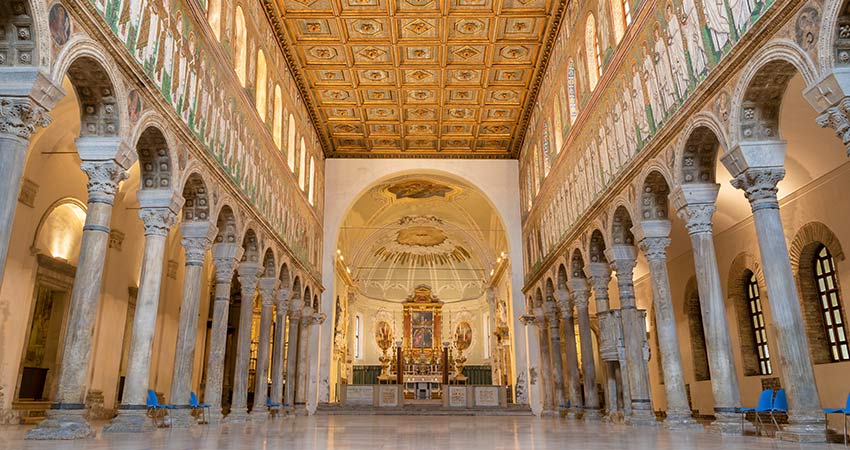
This is a brilliant place to visit! Enjoy the present at one of the town’s laid-back beaches, cafes, or bars. Then discover why Ravenna is a UNESCO World Heritage Site. Famous for its shimmering Byzantine mosaics, Ravenna was actually the seat of the Roman Empire in the 5th century, and it rose to power in the 1st century AD when Augustus was Emperor.
A unique grouping of early Christian mosaics and architecture was built between the 5th and 6th centuries. All are a graceful blend of Greek, Roman, Christian, and Oriental stylization. The monuments of Ravenna are unsurpassed in providing evidence of contacts, artistic influences, techniques, and the blending of cultures.
Etruscan Necropolises of Cerveteri and Tarquinia
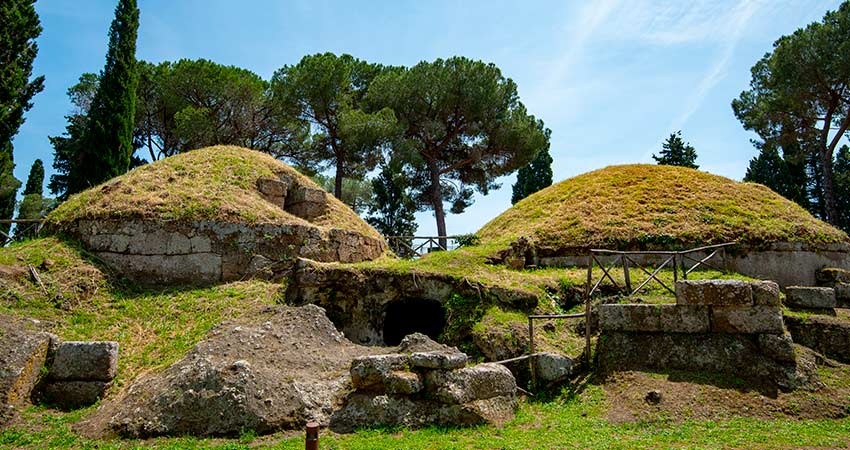
Located in northern Lazio, these two ancient cemeteries are a peek into the Etruscan culture. Best known for their sculptures and frescoes, the Etruscans flourished between the 9th to the 1st centuries BC. Although a lot of their history was erased after being conquered by Rome, this area in Central Italy shows us what a magnificent culture it was.
Over a period of nine centuries, the Etruscans developed the earliest urban society in the northern area of the Mediterranean. Some tombs are gigantic and cut in rock. Others have carvings on the walls, and still others have beautiful paintings. The necropolis, or cemetery, near Cerveteri has thousands of tombs, laid out as if it were a city. Strangely, they’re important in part because they give us an idea of what the Etruscans’ actual neighborhoods were like.
Longobards in Italy—Places of the Power (568-774 A.D.)
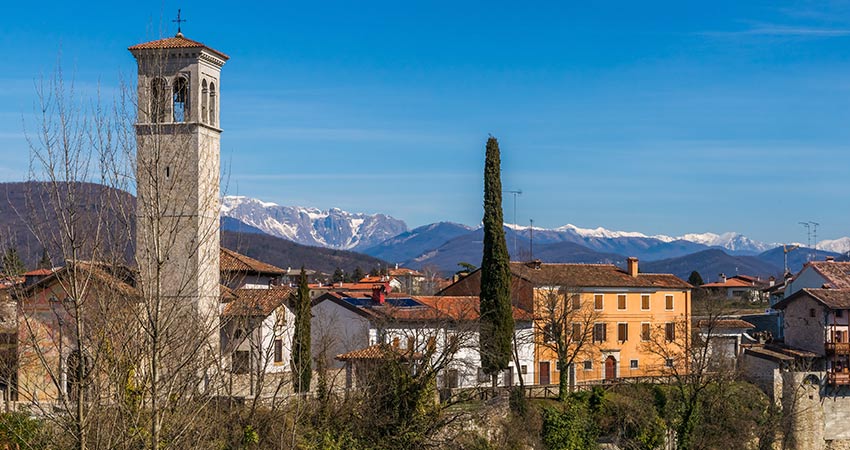
Located throughout the Italian peninsula, the Longobards are made up of seven groups of fortresses, churches, and monasteries. They are perfect examples of the cultural and artistic fusion that happened in Italy between the 6th and 8th centuries AD. In them we see a harmonious blend of Roman civilization, Christian spirituality, plus Byzantine and German influences.
The Lombards came to Italy from Northern Europe, developed their own unique culture, and ruled huge swaths of land. They fed into Europe’s monastic movement, and from them we see the beginnings of Medieval European Christianity.
Prehistoric Pile Dwellings Around the Alps
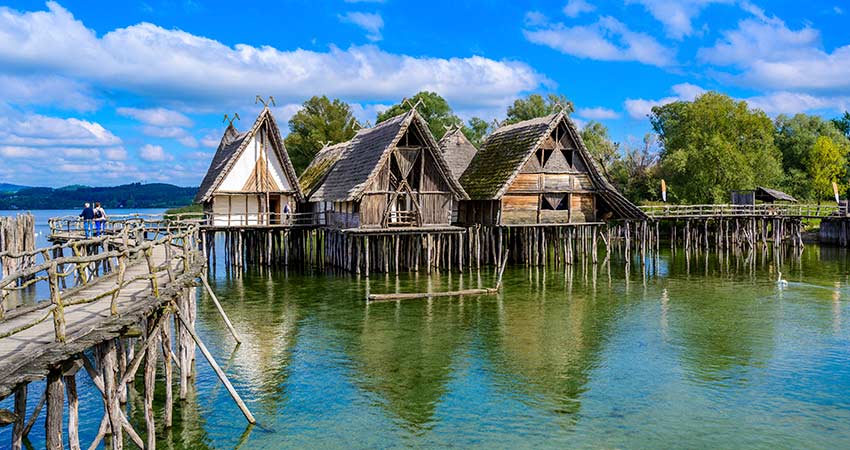
There are 111 sites that are the remains of pile-dwellings, or stilt houses, in the Alps and around them. They were created from 5000 BC to 500 BC. Constructed on the edge of rivers, wetlands, and lakes, they have been preserved in a way that gives us a window into the changes that occurred during the Neolithic and Bronze Ages in Europe. The sites, ranging from Italy to Switzerland, are archaeologically rich and ideal for studying early farm societies.
Rock Drawings in Valcamonica
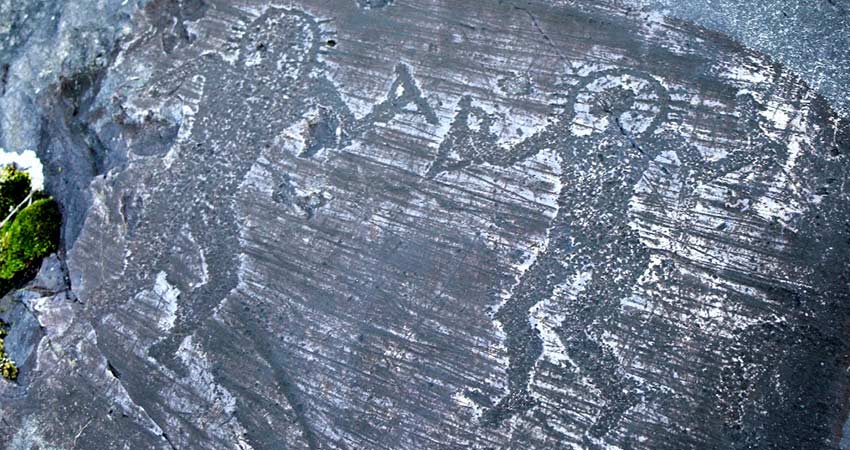
The Lombardy region in northern Italy, is a gorgeous mix of mountains, foothills, the Lombard Plain, and it includes fabulous cities such as Milan. Valcamonica, on the Plain, has one of the greatest collections in the world of prehistoric petroglyphs. More than 140,000 figures, depicting war, magic, relationships, and hunting are carved into the rocks. Besides being a place of importance for the study of prehistory, sociology, ethnology, and archaeology, this UNESCO site is a place of pure wonder!
Syracuse and the Rocky Necropolis of Pantalica
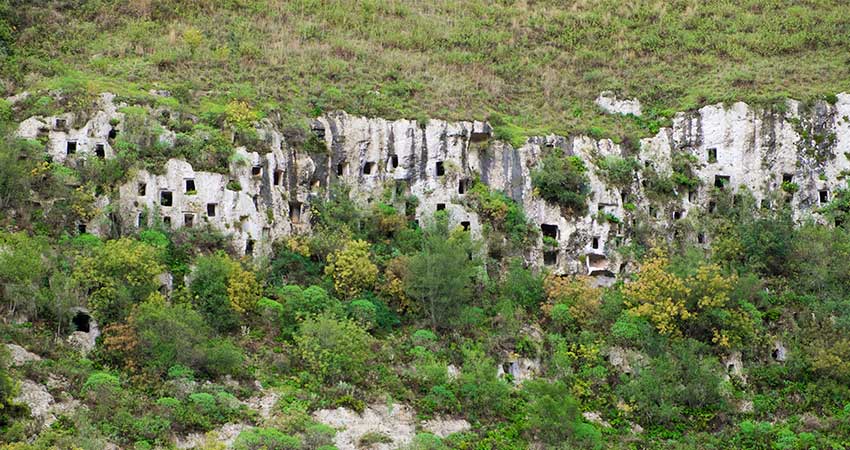
Syracuse was the Greek capital of Sicily, and was in contention with Athens. Its lovely theater and ancient ruins remain, dotted throughout the area. There are two parts of this UNESCO World Heritage Site: The Necropolis of Pantalica and Ancient Syracuse. Both are remarkable for looking at the development of Mediterranean civilizations over 3,000 years. When you travel to Sicily, this is a must.
The Necropolis has more than 5,000 tombs, most dating from the 13th – 7th centuries BC. You’ll also see hints of the Byzantine era, especially in the Prince’s Palace. Ancient Syracuse, known as Ortygia by the Greeks from Corinth in the 8th century BC, was described by Cicero as ‘The greatest Greek city and the most beautiful of all.’ Here you’ll see the remains of the Temple of Athena, a Greek theater, and a Roman amphitheater.
Italy has been paradise for people since prehistoric times. Add at least one UNESCO World Heritage Site to your Italian vacation, and you’ll experience pure magic.
Let your Destination Expert know that you want to take a peek into the ancient and mysterious side of Italy!








